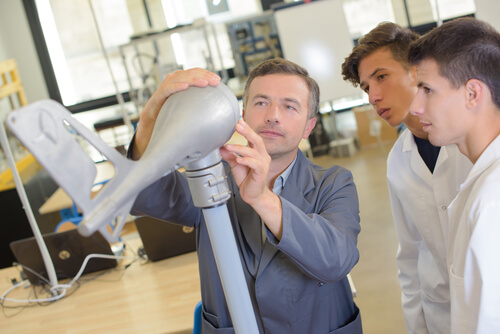When it comes to advanced aerospace manufacturing, the industry can be a competitive one. Driving innovation has always been one of the key contributors to the longevity of the industry. A wide variety of aerospace research organizations out there that are involved in the testing and designing solutions to help develop aircraft parts more efficiently. As the industry continues to move forward, determining how to leverage scanning solutions, which are automated, to improve throughput and speed are of utmost importance.
Due to a large production volume, a wide variety of automobile manufacturing companies have embraced automation. Aircraft manufacturers, on the other hand, are low-volume producers and that’s why the adoption of automation technologies was delayed. However, the trend is changing. More aerospace organizations have started to make use of automation in lower-volume production markets. Let’s find out more on how the aerospace industry can benefit from automated scanning solutions.
Time for Taking Measurements Reduced from Days to Minutes
Small business jet wings can measure approximately 25 feet by 6 feet. Originally, scanning procedures can take all day. However, with automation technology, that process is reduced to minutes. Operators are able to leverage the multitasking capabilities offered by automation solutions. What’s more, the software tools that come with it can repeatedly and accurately manage metrology and inspection tasks. Since the use of automation helps increase efficiency and productivity throughout the entire product line, large aerospace components can now be inspected with greater ease and precision. Today, Coordinate Measuring Machines are used for such tasks.
Achieve Greater Cost Efficiency
Metrology-assisted assembly with the latest software and metrology equipment usually result in greater cost efficiency and shorter production cycles. This is especially true in the aerospace manufacturing industry where composite parts are increasingly common. Composite is harder and more unforgiving than metal. That’s why one has to get it right the first time, i.e. making sure assembly adheres to extremely narrow tolerances. 3D models often work better than fixed tooling structures. They allow operators to react to engineering changes much more nimbly.
Seamless Collaboration between Different Departments
Measuring large-scale parts that are usually utilize for aircraft manufacturing is a task that reaches a whole new level. It is pertinent that organizations procure portable metrology instruments that offer user-friendly and convenient solutions. Software found in Willrich Precision has the ability to integrate an array of instruments, as well as optimize and synthesize data from a multitude of sources. Our solutions are designed to help users share equipment and gain the ability to choose from a combination of measurement technologies that best fits their measurement job – all through a common interface that is running one or more measurement sensors simultaneously, in the background.





